Discover 11 hidden attractions, cool sights, and unusual things to do in Wernigerode (Germany). Don't miss out on these must-see attractions: Luftfahrtmuseum Wernigerode, Wernigerode Castle, and Ottofelsen. Also, be sure to include Feuersteinklippe in your itinerary.
Below, you can find the list of the most amazing places you should visit in Wernigerode (Saxony-Anhalt).
Table of Contents
Luftfahrtmuseum Wernigerode
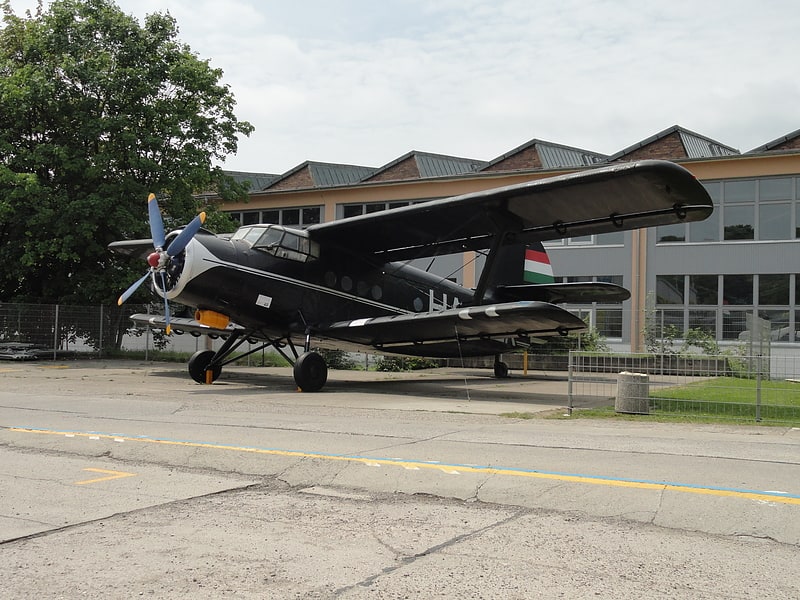
Museum in Wernigerode, Germany. The Museum für Luftfahrt und Technik Wernigerode is an aviation museum located in the German town of Wernigerode near Halberstadt. Many aerospace exhibits are on display including fixed-wing aircraft, helicopters and aircraft engines. The main display is contained within two buildings with some aircraft displayed externally. In addition to the aircraft exhibits a number of cockpit sections and a collection of ejection seats are also held by the museum.[1]
Address: Gießerweg 1, 38855 Wernigerode
Wernigerode Castle
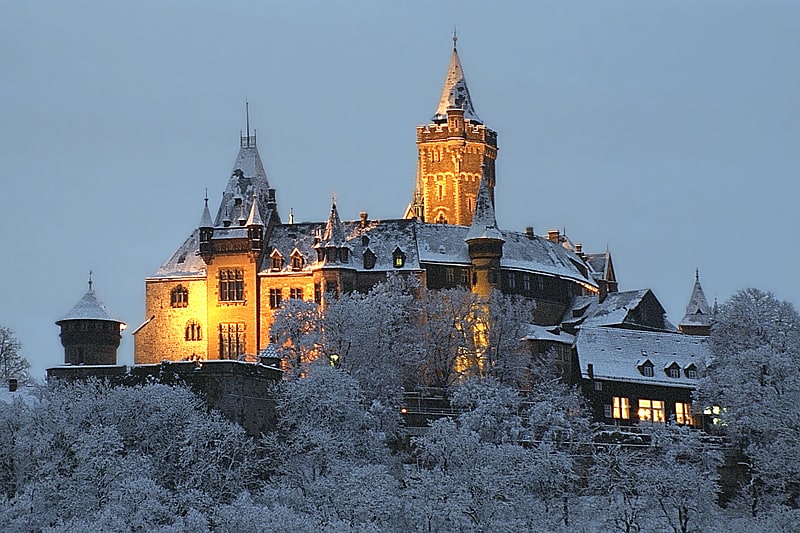
Also known as: Schloss Wernigerode
Romantic hilltop castle and lavish decor. Wernigerode Castle is a schloss located in the Harz mountains above the town of Wernigerode in Saxony-Anhalt, Germany. The present-day building, finished in the late 19th century, is similar in style to Schloss Neuschwanstein, though its foundations are much older. It is open to the public and one of the most frequently visited in Saxony-Anhalt.[2]
Address: Am Schloß 1, 38855 Wernigerode
Ottofelsen
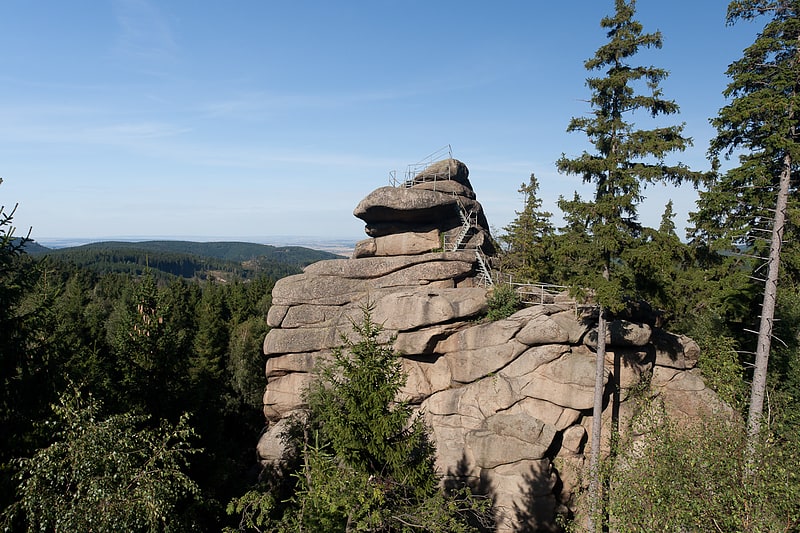
Also known as: Ottofels
Monument in Wernigerode, Germany. The Ottofels, named after Prince Otto of Stolberg-Wernigerode, is a tor and natural monument near Wernigerode in the Harz mountains of central Germany.
The Ottofels or Ottofelsen lie about 2.5 km southwest of Hasserode in the borough of Wernigerode. It can only be reached on foot, either from the Steinerne Renne halt on the Harz Railway and Brocken Railway or from the car park at the junction of the Thumkuhle and Dränge valleys not far from the road to Drei Annen Hohne.
The rocks stand at a height of 584 metres above sea level and are 36 metres high. They are made of coarse-grained granite and have been weathered to form a tor. On 27 July 1892 there was a ceremony to mark the completion of public access to the top, which consisted of several iron ladders. These ladders were replaced after the Wende in 1990. In addition the Ottofels is used for rock climbing by mountaineers.
From the summit there is a panoramic view of the mountains and valleys of the Harz as far as its highest peak, the Brocken, and far over the northern Harz Foreland.
The Ottofels is checkpoint no. 27 in the Harzer Wandernadel hiking network.[3]
Feuersteinklippe

The Feuersteinklippe is a rock formation in the Harz National Park in central Germany and the landmark of the nearby village of Schierke.
The Feuersteinklippe is a butte made of granite, not flint (Feuerstein = "firestone" or flint) as the name suggests. It shows the spheroidal weathering typical of the Harz region. The striking rock formation is located at a height of 690 metres and is surrounded by woods. It lies to the north of Schierke station.
The name Feuersteinklippe is derived from the Schierker Feuersteinwiesen (Schierke Feuerstein meadows) that lie to the southeast, which in turn were named after the cultic fires or signal beacons originally lit at this spot.
An information board on the rocks recalls the visit of Goethe and the painter, Georg Melchior Kraus, who spent time here on 4 September 1784 in geological studies.
The well-known herbal liqueur, Schierker Feuerstein, which is made in Schierke, is named after the rocks. The label portrays the rock formation.[4]
Plessenburg
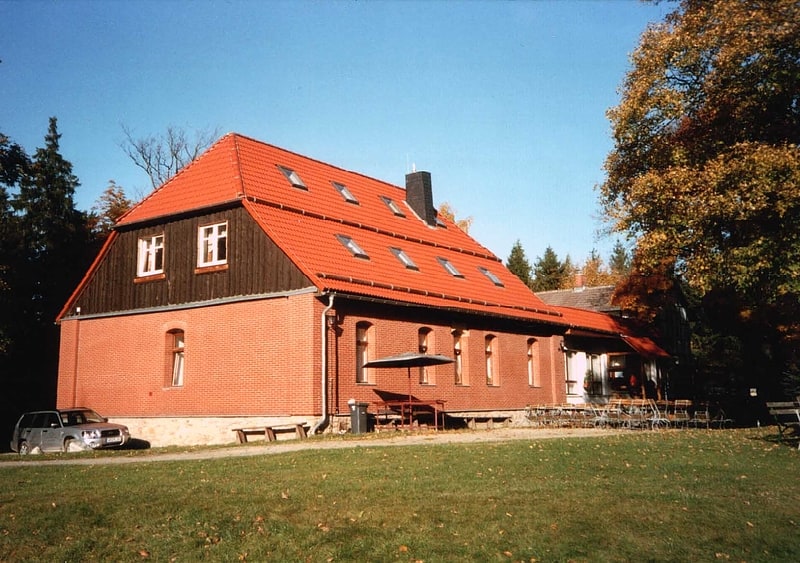
Plessenburg is a village in the town of Ilsenburg in the Harz National Park, in the district of Harz in the German state of Saxony-Anhalt.[5]
Address: Plessenburg 1, 38871 Ilsenburg (Harz)
Armeleuteberg
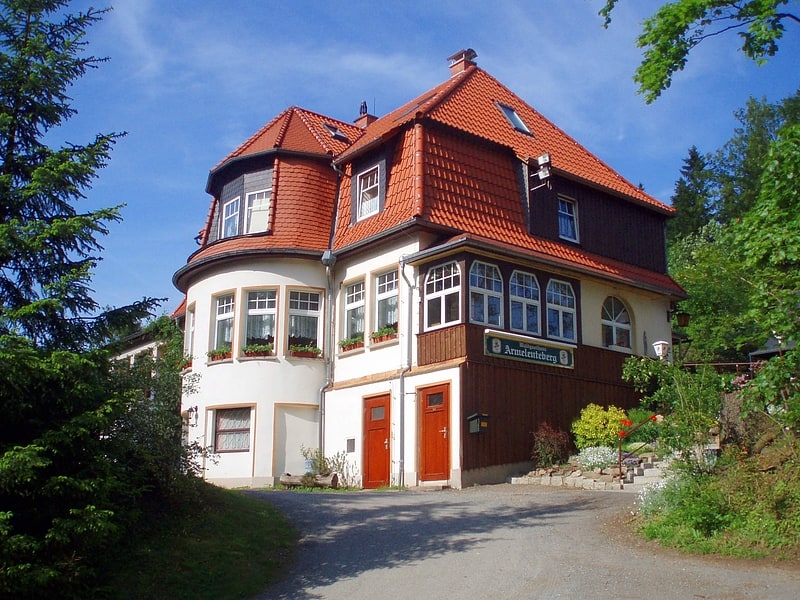
The Armeleuteberg is a 478-metre-high hill south of Wernigerode in the district of Harz in the German state of Saxony-Anhalt. Since 1902 the Kaiserturm, an observation tower, has stood on its summit. Between the Kaiserturm and the Försterplatz car park is the forest inn of the same name.
The Armeleuteberg inn is checkpoint no. 35 in Harzer Wandernadel hiking trail network.[6]
Address: Start at Marktplatz, Wernigerode
Medieval Town Hall
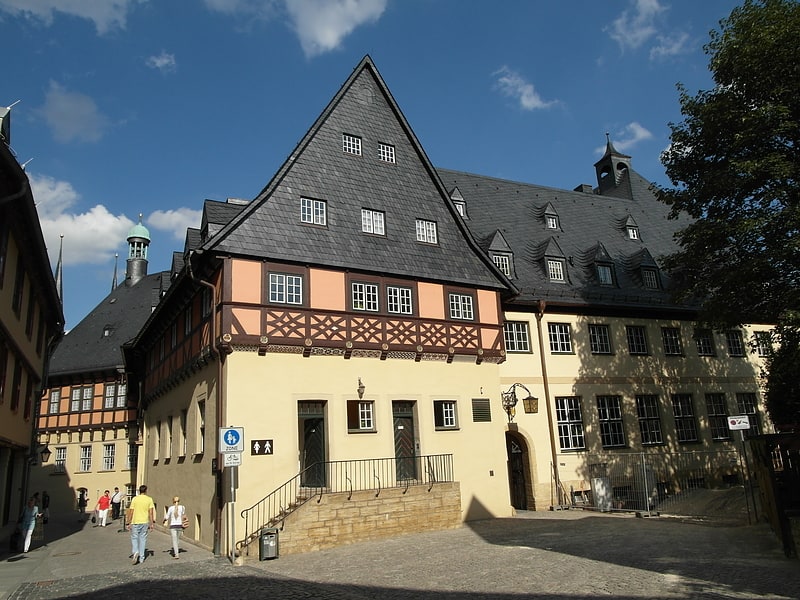
Wernigerode Town Hall is the town hall of the city of Wernigerode in Saxony-Anhalt, Germany.
Address: Marktplatz 1, 38855 Wernigerode
Kleine Renne
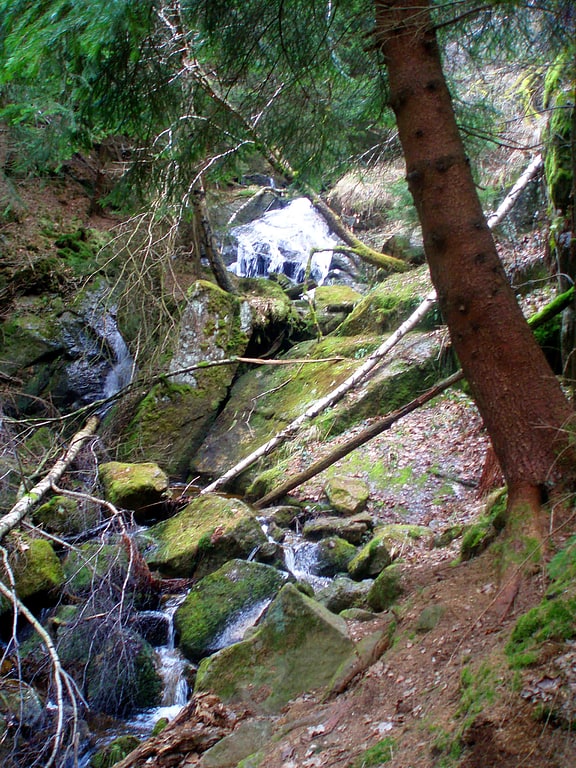
The Kleine Renne is a cascading mountain stream and officially designated natural monument near the town of Wernigerode in the Harz Mountains of Germany.[7]
Mönchsbuche
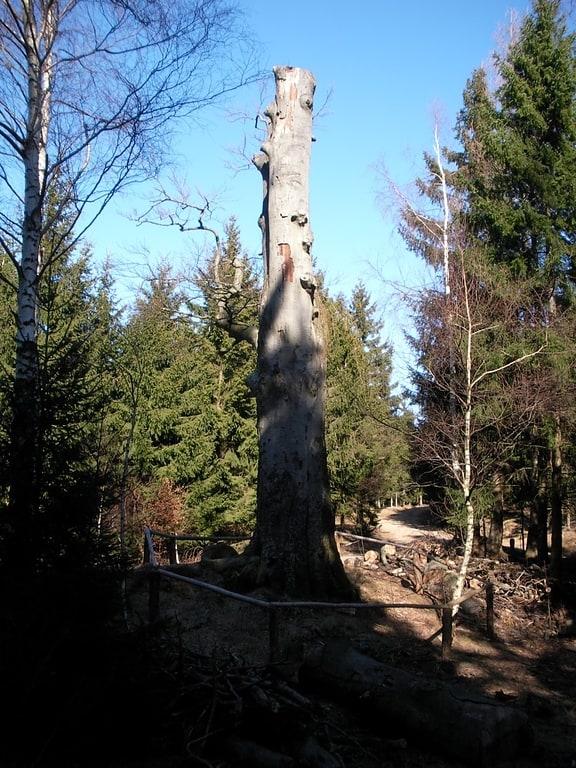
Tourist attraction in Wernigerode, Germany. The Mönchsbuche is an old beech tree in the Harz Mountains of Germany that has been designated as a natural monument due to its age and the stories surrounding it. It stands on a ridge near Hasserode in the borough of Wernigerode, on an old way between the abbeys of Himmelpforten and Ilsenburg and is reputedly where the monks used to stop and rest. In March 2011 the top of the old tree, that is over 100 years old, was removed in order to save it from breaking apart.
The Mönchsbuche is a landmark and also checkpoint no. 26 in the Harzer Wandernadel hiking network. Below the Mönchsbuche is the well known as the Wernigeröder Bürgerbrunnen.[8]
Steinerne Renne
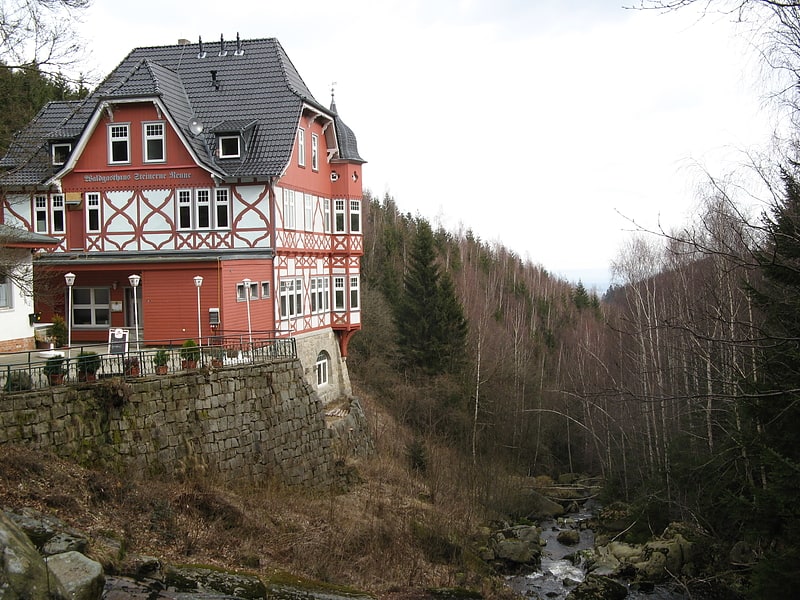
Hotel in Wernigerode, Germany. The Steinerne Renne is a waterfall and natural monument near the town of Wernigerode in the Harz mountains of central Germany.[9]
Elversstein
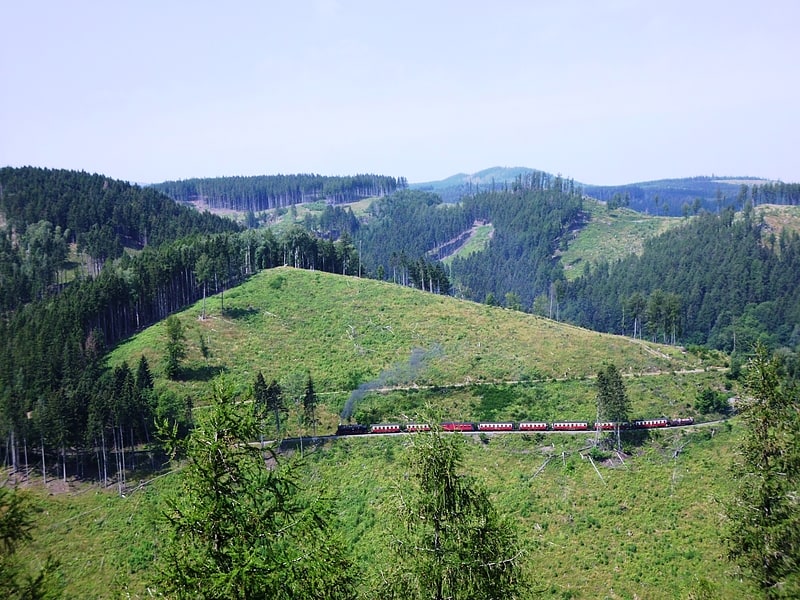
The Elversstein in the Harz Mountains of Germany is a granite rock formation with a maximum elevation of 499 m above sea level on the Steinberg near Hasserode in the county of Harz in Saxony-Anhalt.[10]
Address: Nationalpark Harz, 38855 Wernigerode